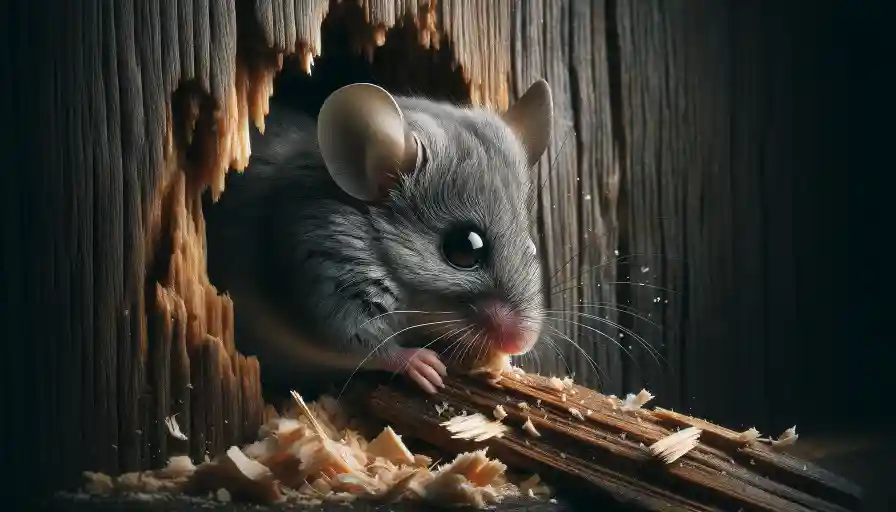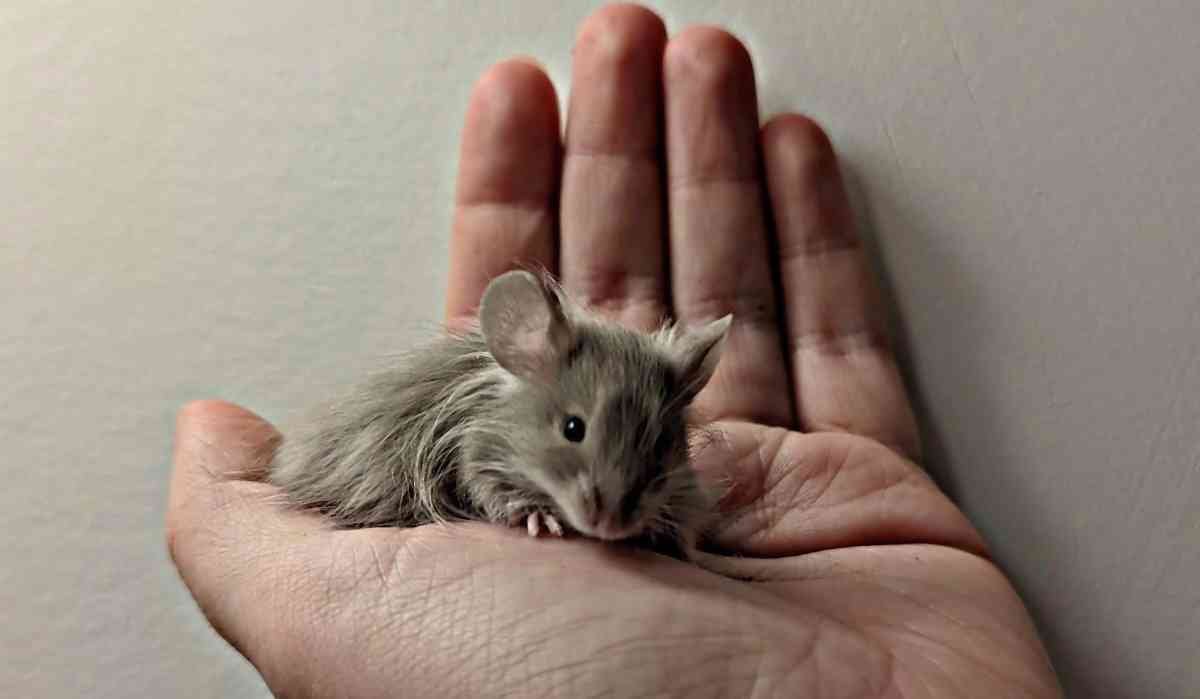If you hear scratching noise coming from your walls, it may be a mouse trying to make its way through. Given time, it will succeed but this also means damage to your walls. However, the main focus of this article is how long it will actually take a mouse to burst it open. So, how long does it take a mouse to chew through a wall? We will talk about this, then we will go over the proper steps you can take to stop them.
How Long Does it Take a Mouse to Chew Through a Wall?

Mice do have really sharp teeth that can grow into their brains. However, the solution is for them to grind their teeth against each other. According to Michigan State University, “This friction is similar to using a grindstone to sharpen a knife.” This process of self-sharpening helps to keep their teeth short and the edges nearly as sharp as a chisel. Now, how long it takes for a mouse to chew through a wall can take a few days to about 2 weeks, depending on how often the mouse works on it. Unlike rats, mice tend to chew slower.
The major determinant of their chew speed through a wall will depend on the wall material. Some materials are easier for mice to chew through, while others are tougher, and some can’t be chewed through at all by mice. Moreover, if a mouse has less access to food and water, it might chew through a wall quickly in search of food.
Earlier, I explained that mice chew often to maintain their teeth. However, a mouse chewing through your walls could also be doing so to make a hole for travel or to find shelter inside your building. In these cases, it chews faster. Let’s look at the walls as they determine how quickly a mouse can chew through.
Types of Walls
It’s difficult to say exactly how long it takes for a mouse to chew through a wall, as it depends on the wall type.
A mouse can chew through a thin, soft wall like plywood or drywall in as little as under two hours, but it could take up to a week. They can also get through wooden walls fairly quickly, but thicker wooden walls might take a few days to a couple of weeks.
However, even the most persistent mouse can’t chew through brick, cured concrete, or ceramic walls. Instead, the mouse might find small holes or cracks in these walls to enter your home. Let’s explore the types of walls that a mouse can chew through and pass.
1. Concrete
Mice can chew through concrete, but only if it’s non-cured or hasn’t been cured properly, meaning it has more water than cement and isn’t strong enough.
Non-cured concrete is about half as strong as cured concrete. In such cases, a mouse can gnaw through it. Even if they can’t make a hole in cured concrete walls, they can still enter through small openings and squeeze inside.
2. Glass Fiber
Glass fiber, or fiberglass, is a reinforced plastic material (FRP), and since mice can chew through plastic, they can also chew through fiberglass wall coverings or panels. Fiberglass is very popular with rodents because it’s warm, comfortable, and protects them from predators. Mice families often use fiberglass walls as their living and nesting places. It’s hard to hear mice in fiberglass walls, so it’s important to inspect regularly for other signs of infestation.
3. Drywall
A drywall is a panel made of gypsum plaster, which is covered by layers of fiber, like fiberglass and paper. It’s usually soft and edible for mice, so they can easily eat through it. They get to the crumbly core of the drywall and can easily destroy it by nibbling on it.
4. Plywood
Plywood is made of wood veneers and is designed to be smaller and thinner, making it an easy target for mice to chew on. Some plywood is also made of soft material that can become wet and soggy quickly, making it even easier for a rodent to make a hole by constantly nibbling and scratching. Mice also like to collect wood shavings and debris from plywood to build their nests.
5. Wood
Similar to plywood, a wooden wall is an easy target for these persistent pests. However, the thicker the wood, the harder it is for a mouse to chew through. Hardwood presents a challenge, but it’s not impossible for them. Mice gnaw on wood to keep their teeth in shape, and they also take wood shavings and bits back to their nests. That’s why wooden walls are like a feast for mice.
How To Stop Mice Chewing In Walls?

1. Seal their entry points
First, you need to block their entry points. You can use expanding foam or steel wool for this. I had mice in our attic once. I found their entry point and initially sealed it with spray foam, but they chewed through it. So, I used steel wool to plug the hole and then applied the foam. Since your hole is in concrete, you might need a different approach. Pull apart some steel wool and stuff it into the hole, packing it tightly. Then, fill the rest of the hole with concrete.
2. Set up mouse traps
Setting mouse traps is a common method for catching these pests. For lethal traps, it’s better to use snap traps that kill instantly rather than poison bait traps, to avoid having a decomposing and smelly rodent in your walls.
3. Use ultrasonic rodent repellent
I’ve been using an ultrasonic rodent repeller plug, and it works to keep mice away. I remember seeing a mouse in the hall last year but haven’t seen any since I started using the plug.
4. Set an electric mouse trap
I also bought an electric mouse trap, which has been extremely effective. Initially, I was catching two or three mice daily, but then the numbers dropped to zero. This trap is great because it kills the mice instantly, so there’s no bad smell, and it’s easy to dispose of them without worrying about them dying inside the walls.
5. Trap mice in wall with bucket trap
You can make a DIY bucket mouse trap to capture mice. Take a bucket, fill it halfway with water, and get a can. Make a hole in the can’s bottom and put it on a dowel. Cover the can with peanut butter and place it across the bucket in a spot where mice can reach it. The mice will be attracted to the peanut butter, but when they jump on the can, it will roll and drop them into the water.
Conclusion—Hire a Pest Exterminator
When you have a mice problem, you can hire an exterminator. They will find where the critters are getting in, use poison to get rid of them, and then seal the entry points. If you’re renting your place, it’s your landlord’s responsibility to pay for this. If you tell your landlord about the issue and they don’t do anything, you have the right to handle it yourself. You can then deduct the cost from your rent. Just make sure to attach the exterminator’s bill to your rent payment, so your landlord knows why the rent is less. Keep copies of everything, just in case your landlord is not happy about it.
Read also: How Many Mice Live in a Nest?





